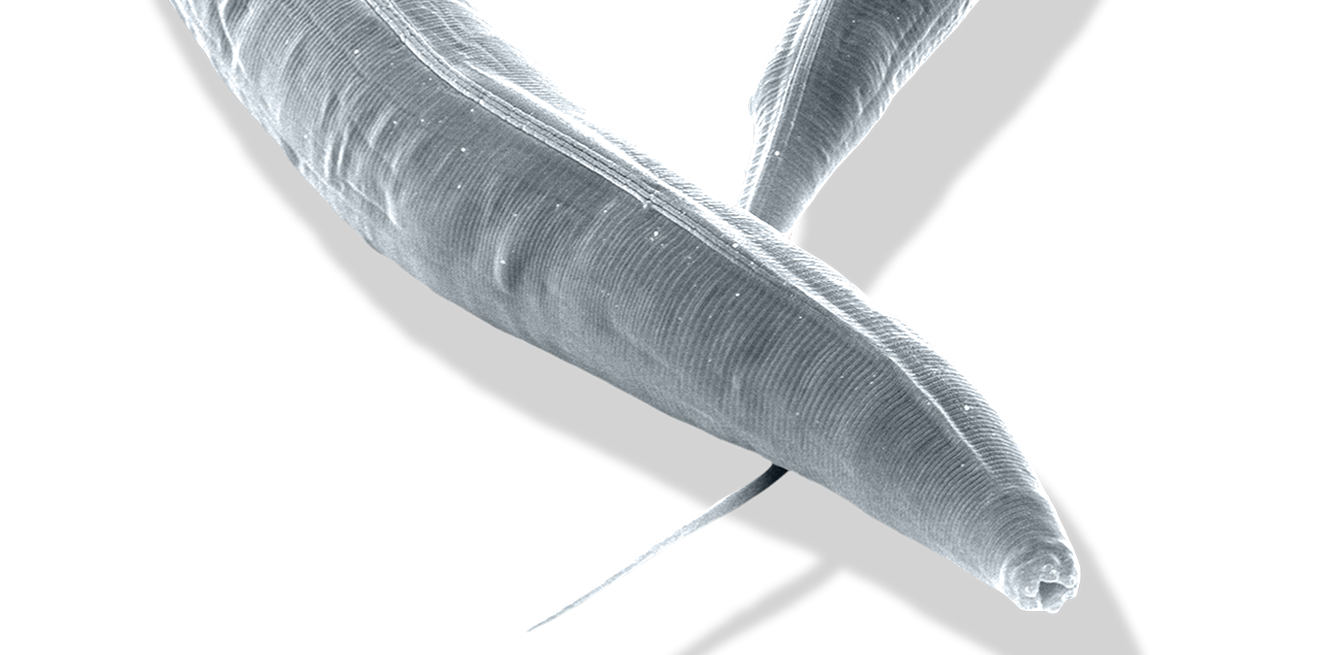
Biologists just love this transparent little roundworm and use it in the majority of their in vitro studies.
Size 1 mm long
Features transparent, hermaphrodite, life cycle of 2.5 days
With its elegant, crystal-clear shell, the nematode C. elegans wins the prize for the most extensively studied organism in science. This tiny, limpidly flowing worm thrives in petri dishes to reach its adult size in just two and a half days. Speedy and adaptable, it feeds on the bacterial blooms that grow on decomposing fruit.
Its qualities as a model organism for molecular biology research earned its “father”, South African scientist Sydney Brenner, the Nobel Prize in Physiology or Medicine in 2002. His discoveries about the genetic code were made possible thanks to the active contribution from this minuscule 1-mm long mollusc. “Nematode C. elegans was the first organism to have its entire genome sequenced in 1998, because it was much easier to understand than that of humans,” says Dr Alexandra Bezler from the Department of Ecology and Evolution with the Faculty of Biology and Medicine at the University of Lausanne. “It’s the pioneer of DNA reading.” From the C. elegans genome, 19,099 genes were decoded, of which 40% had equivalent genes in the human code.
With only 300 neurons, compared with 86 billion to 100 billion in humans, the worm offers a “simplified” mirror of our genome and is the ideal tool for neurobiology research. “It provides a simpler way of studying how the brain functions,” the scientist says. “For example, due to the similarity in ageing molecules, researchers use C. elegans to better understand the human ageing process.”⁄